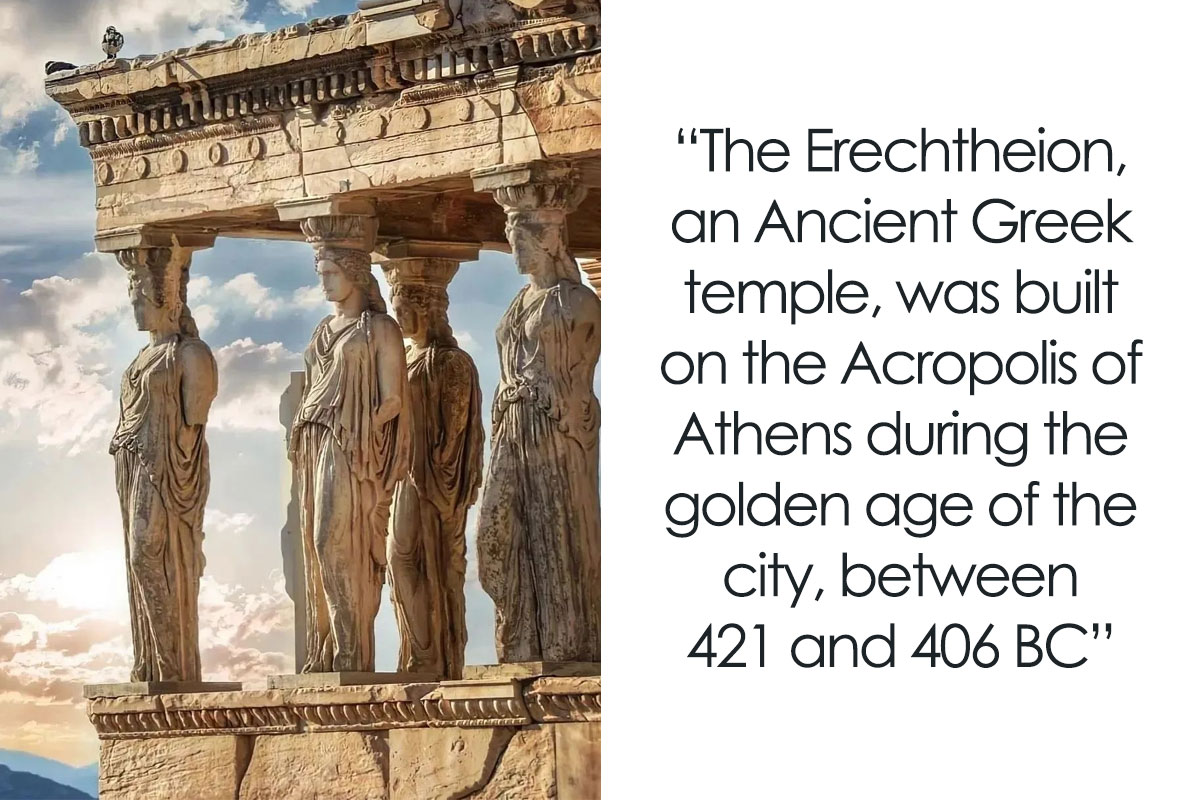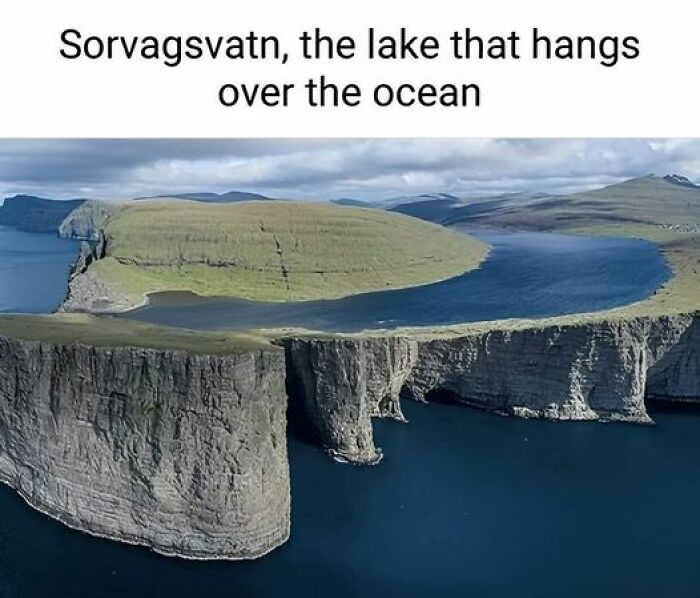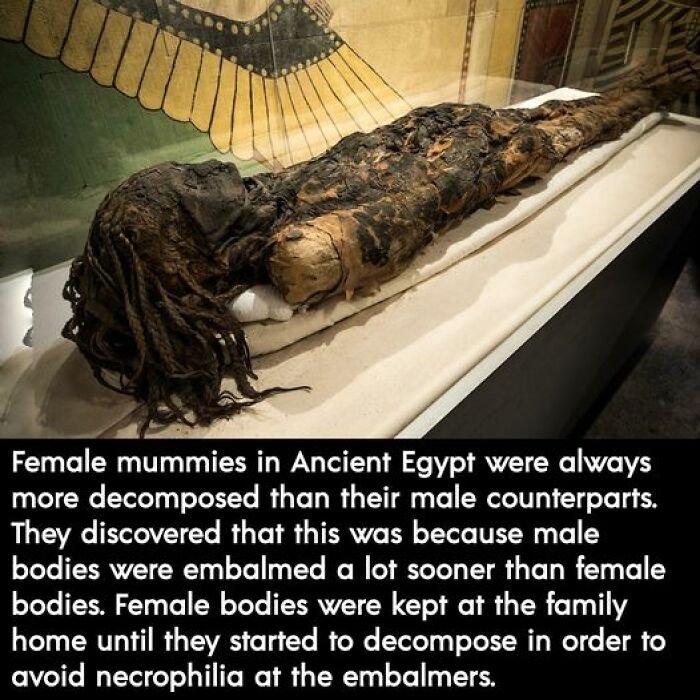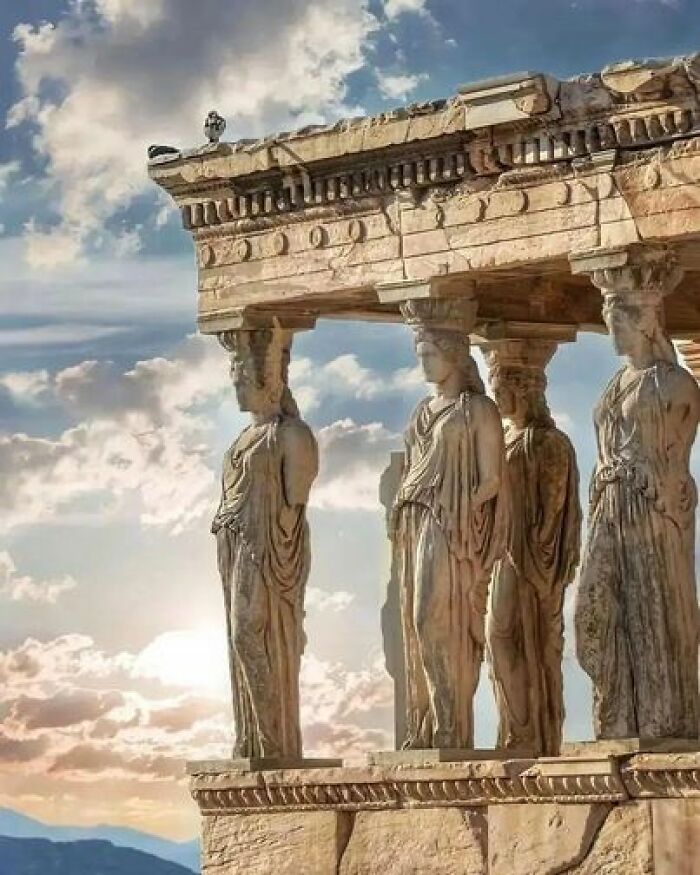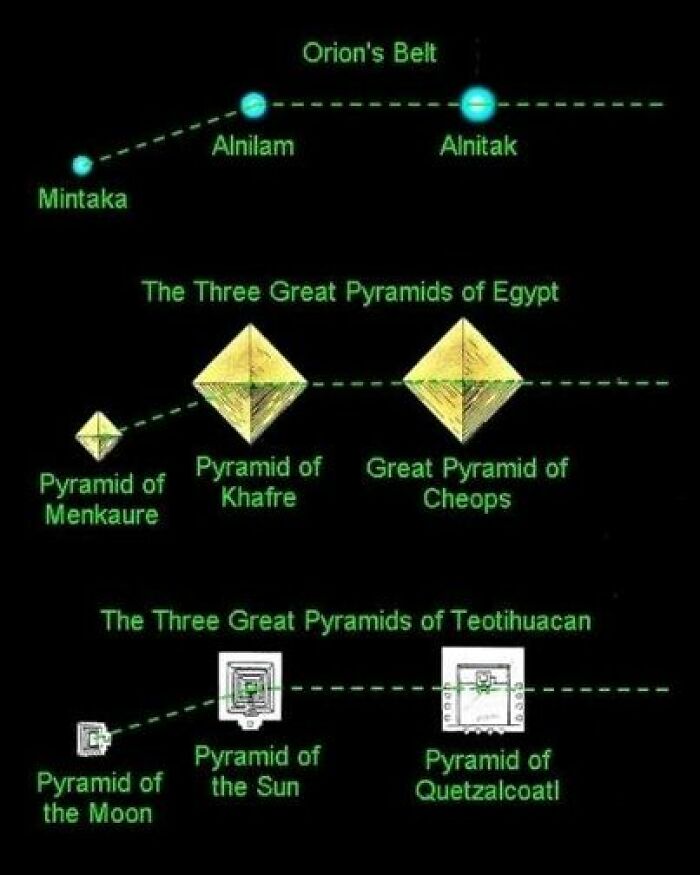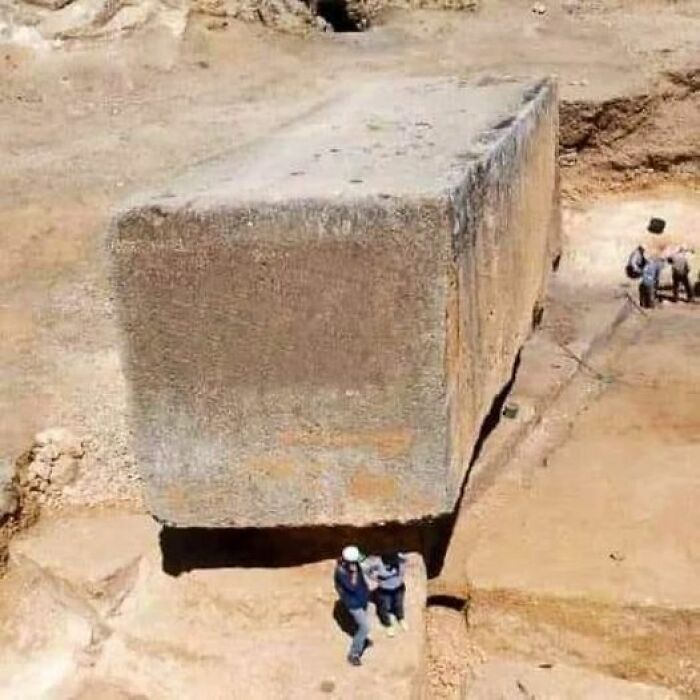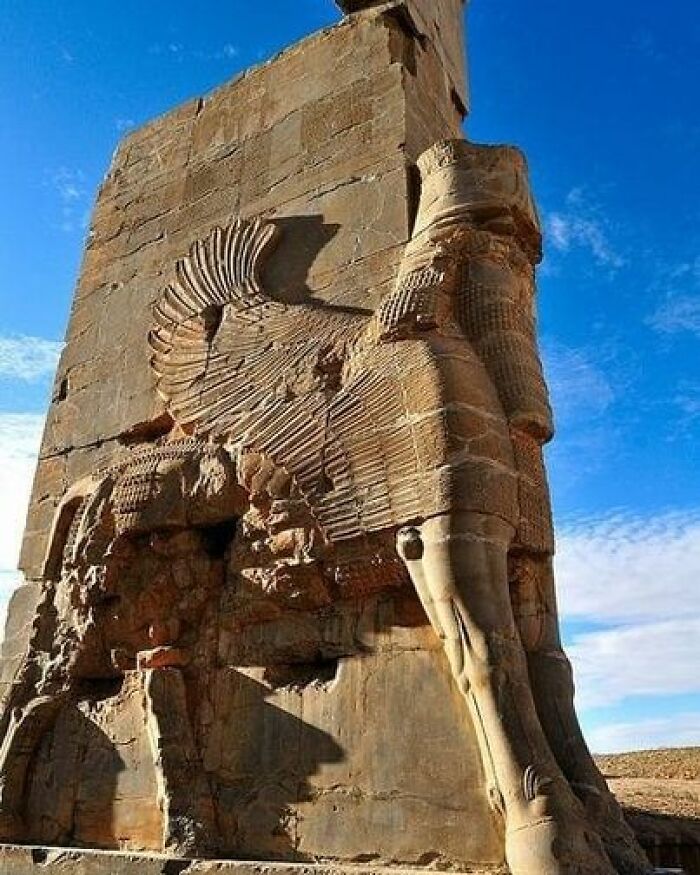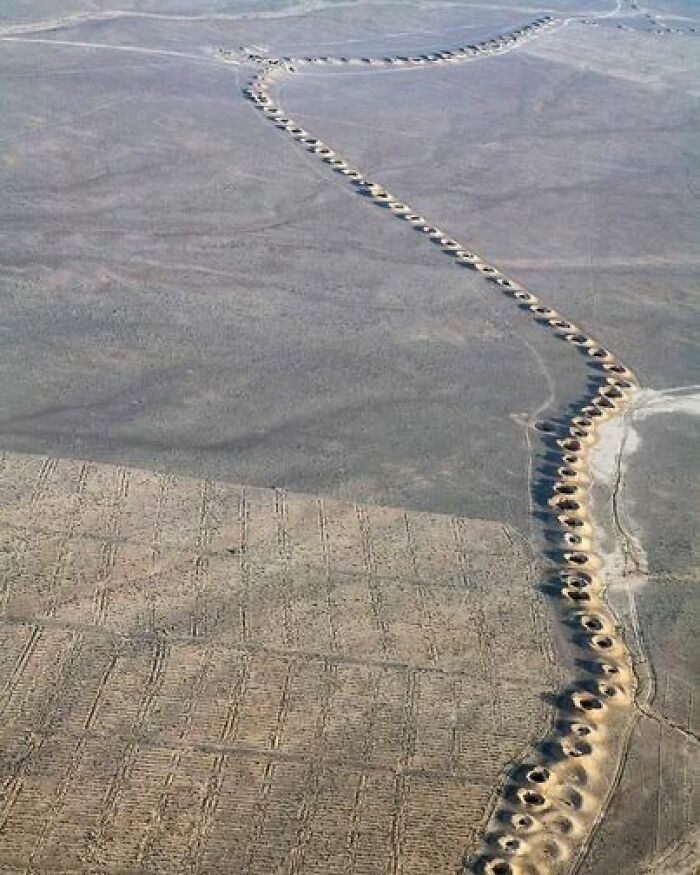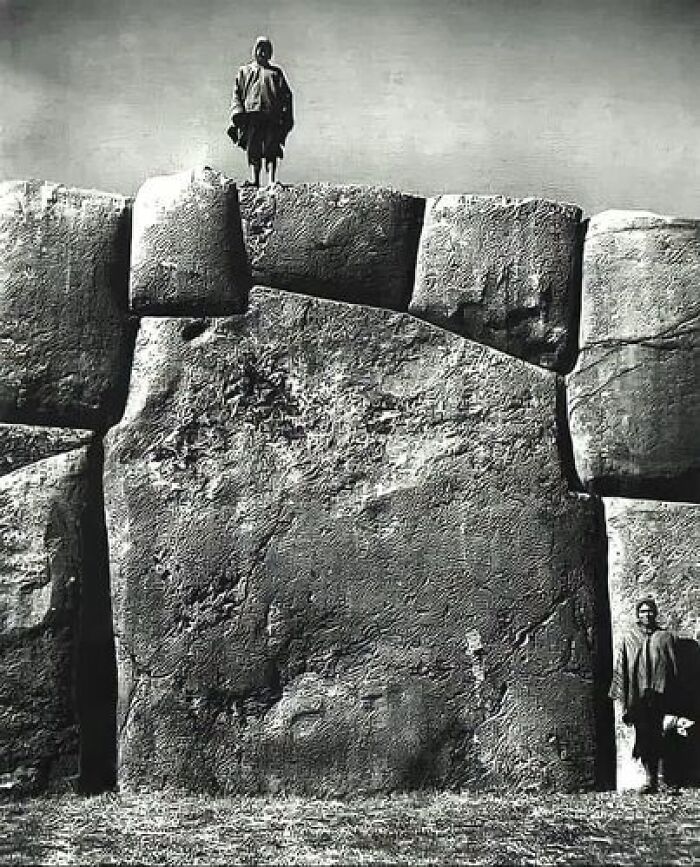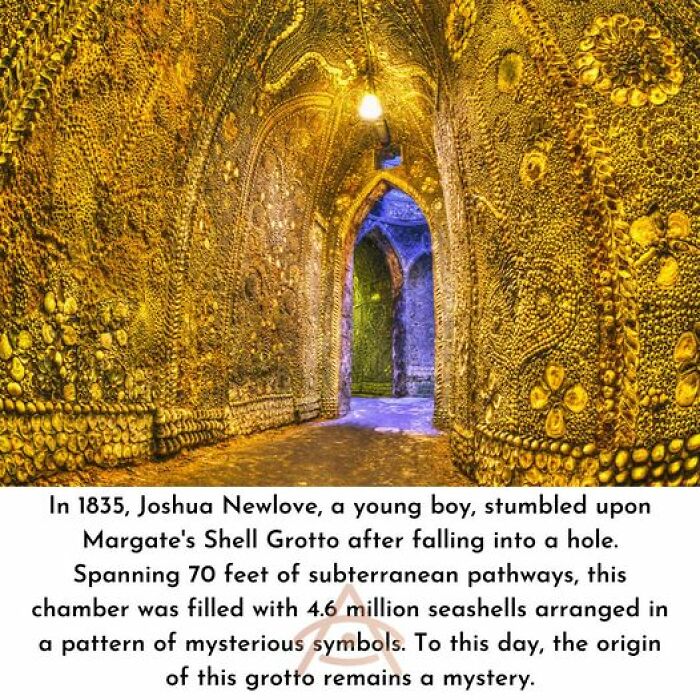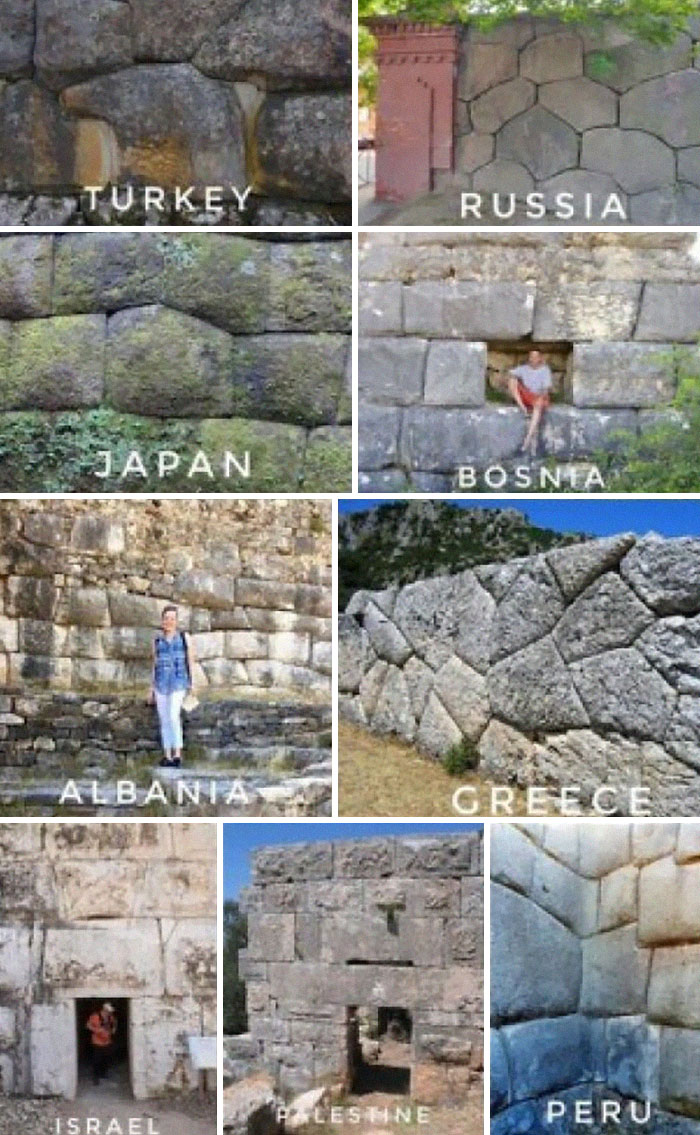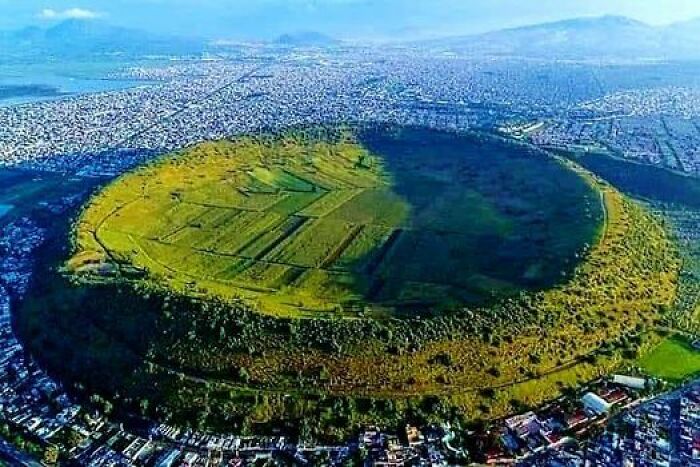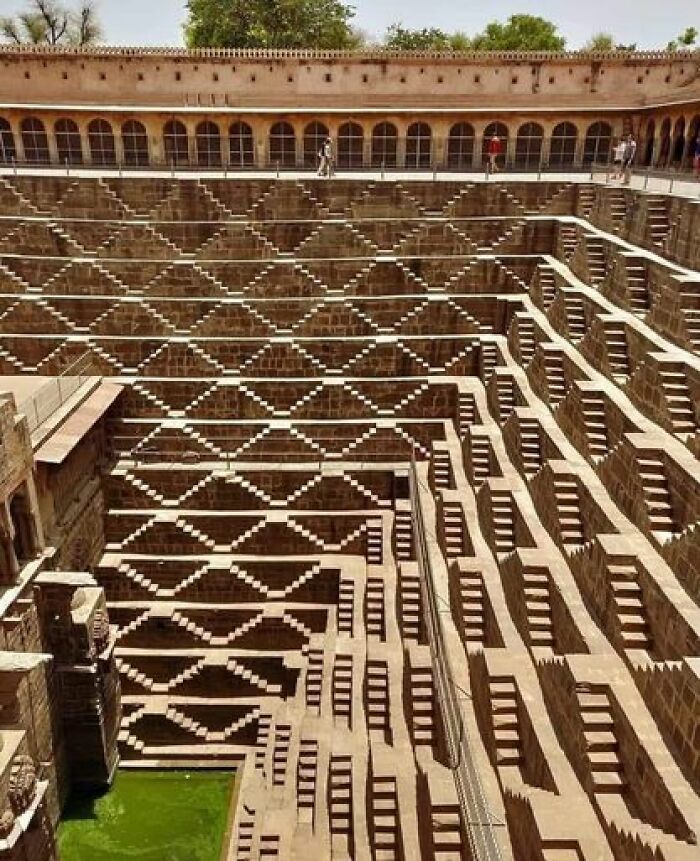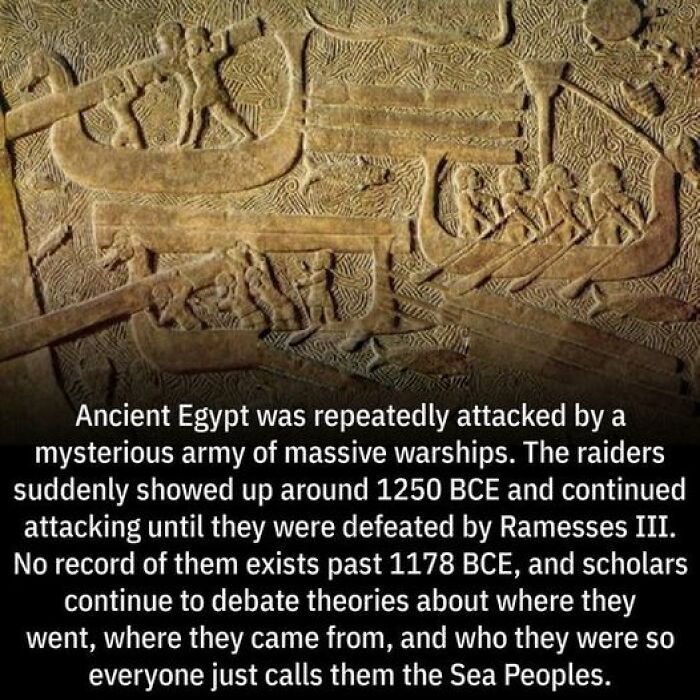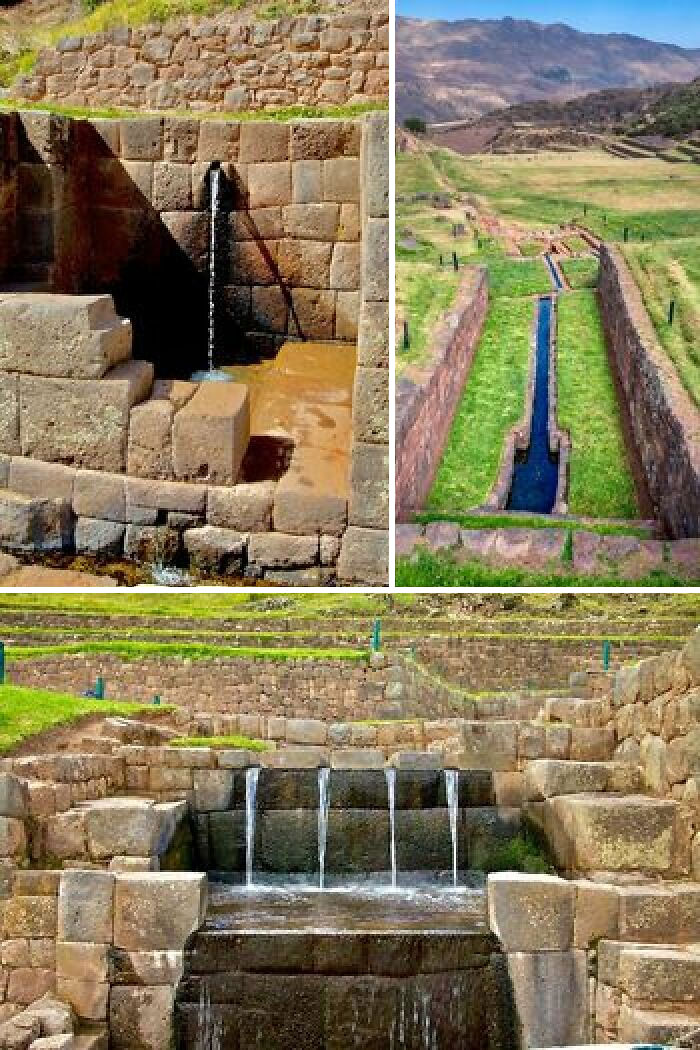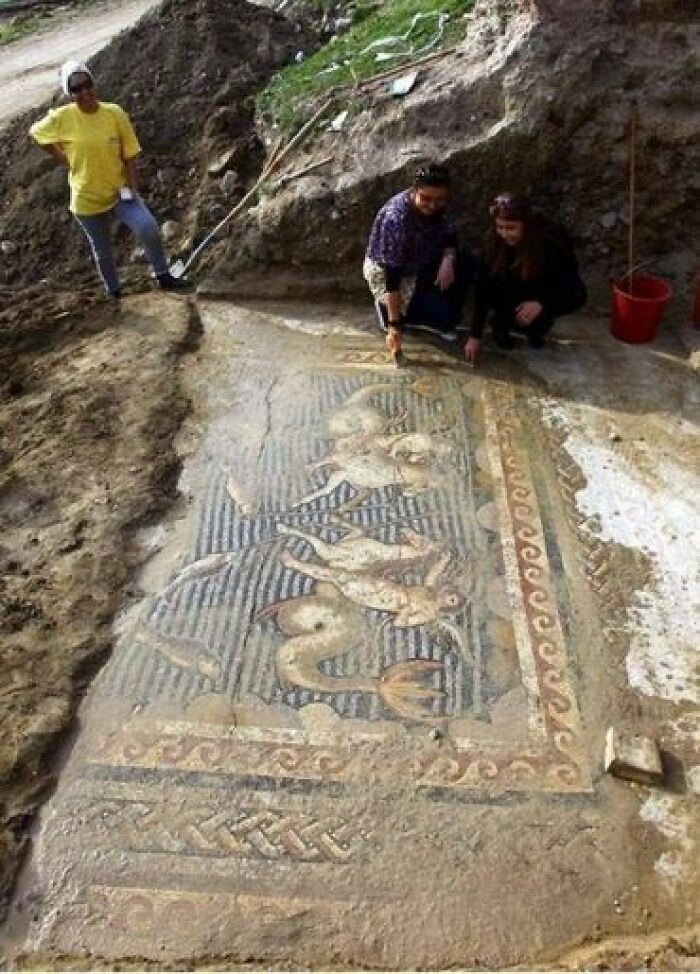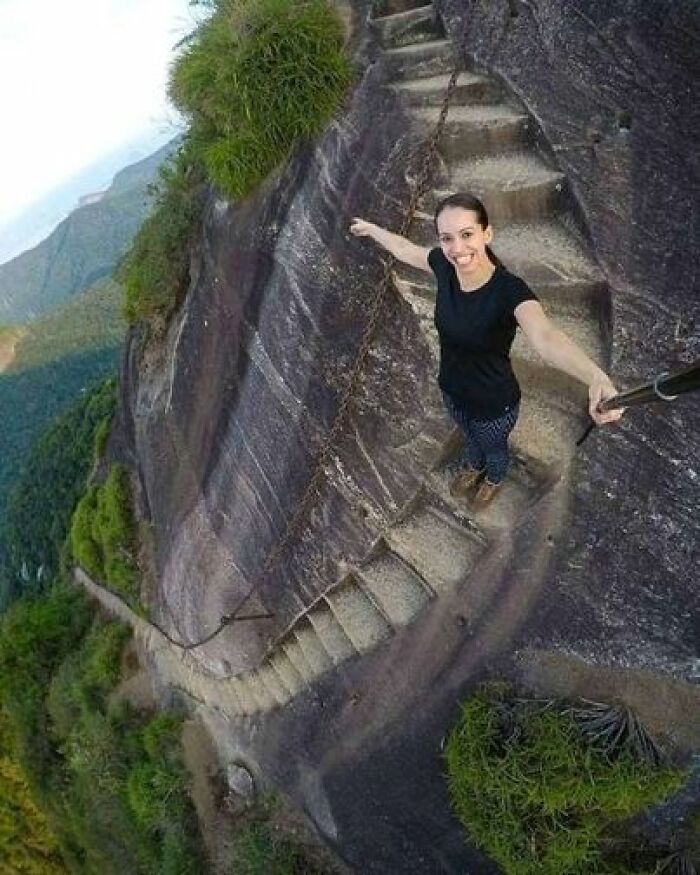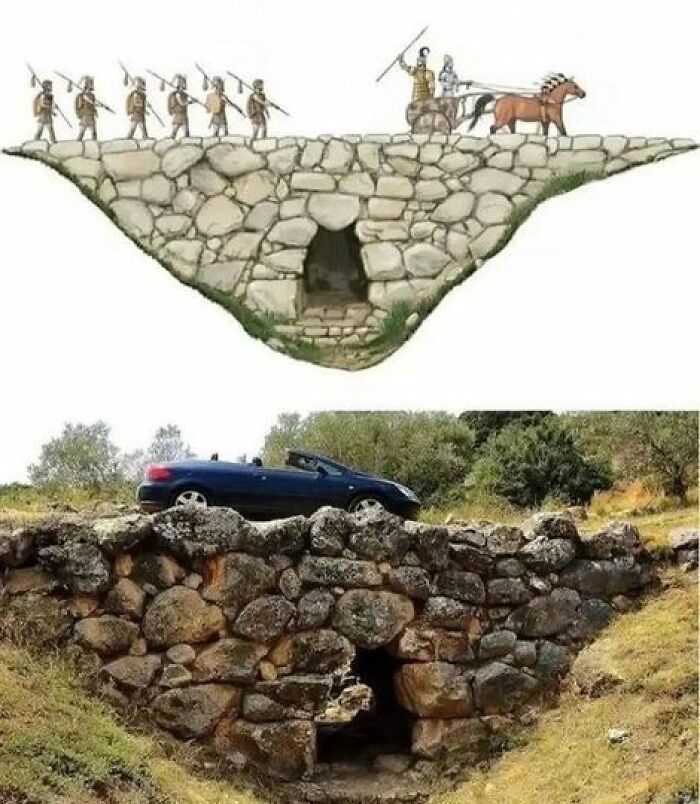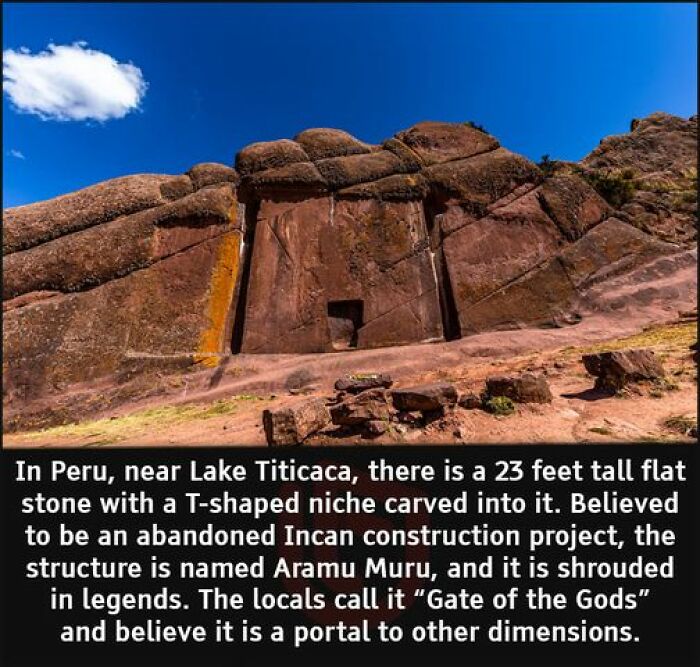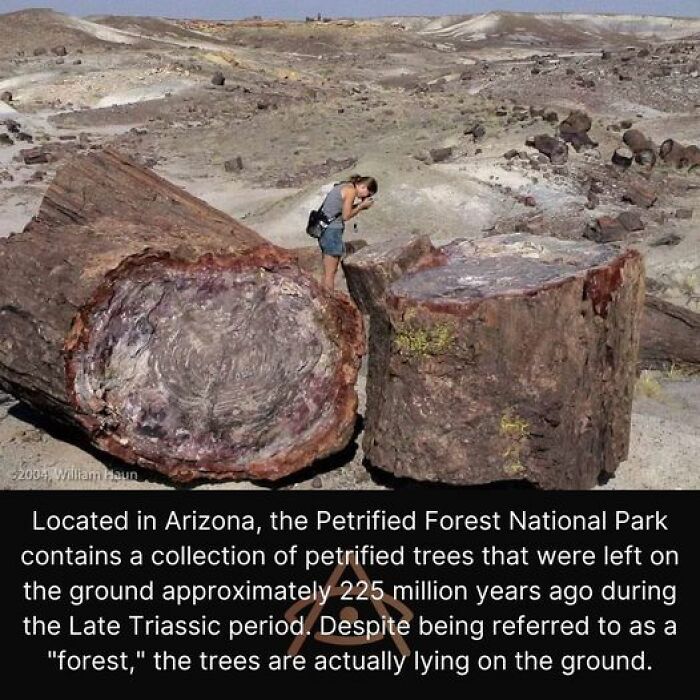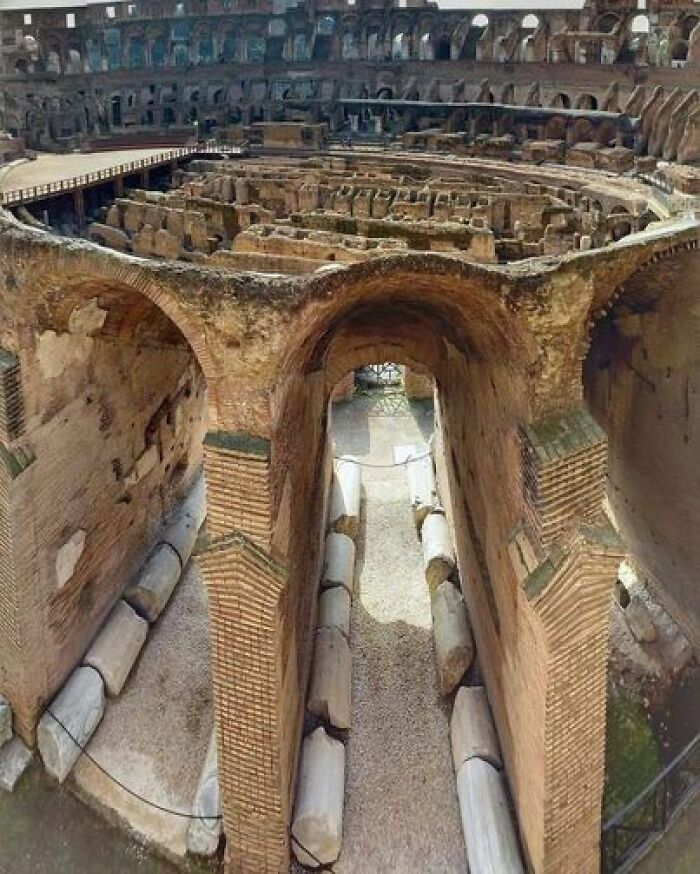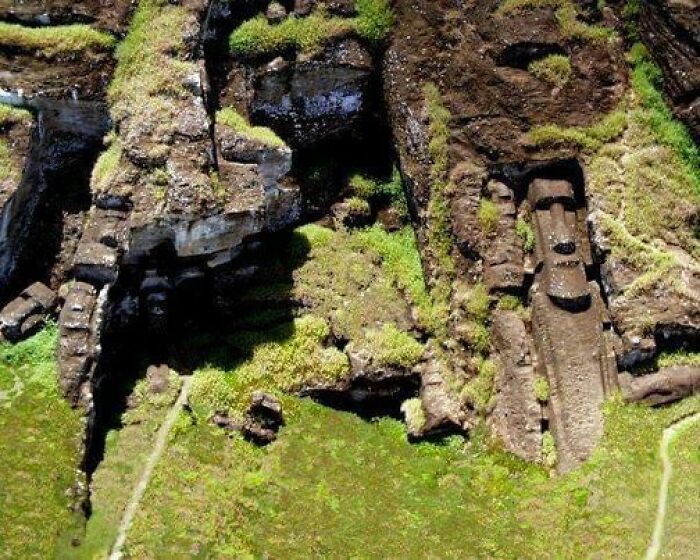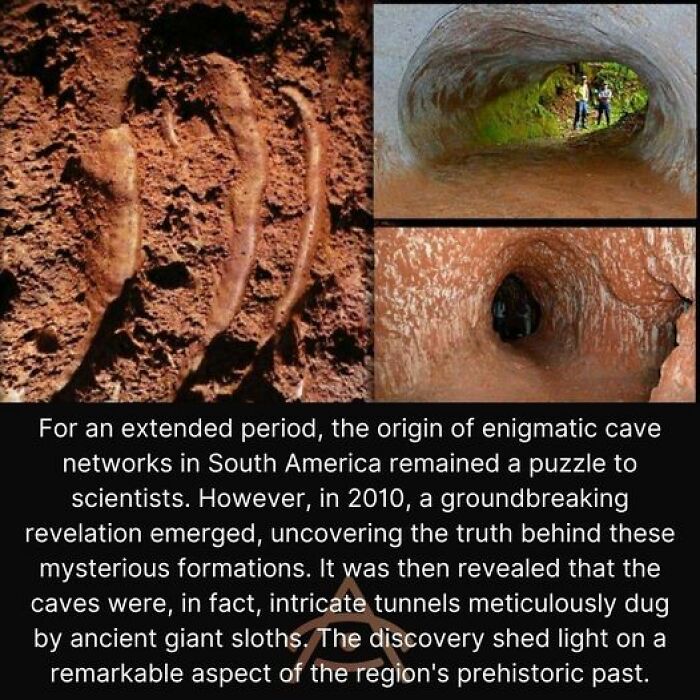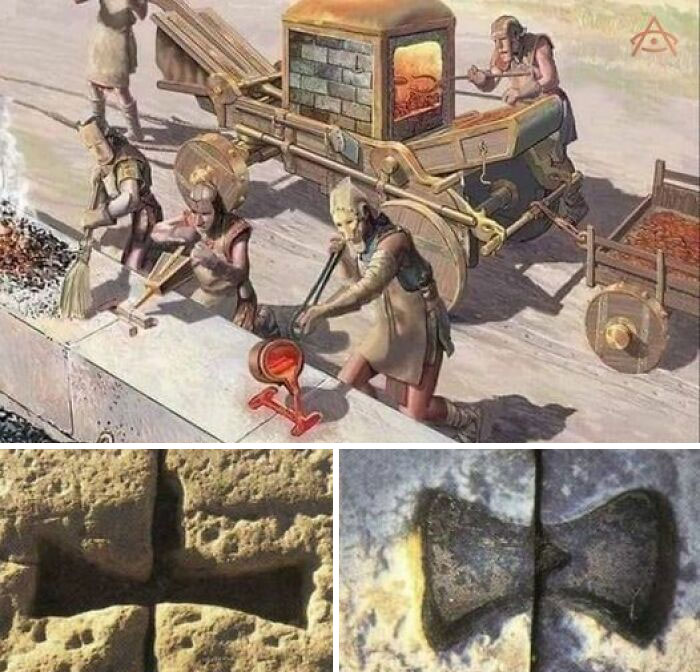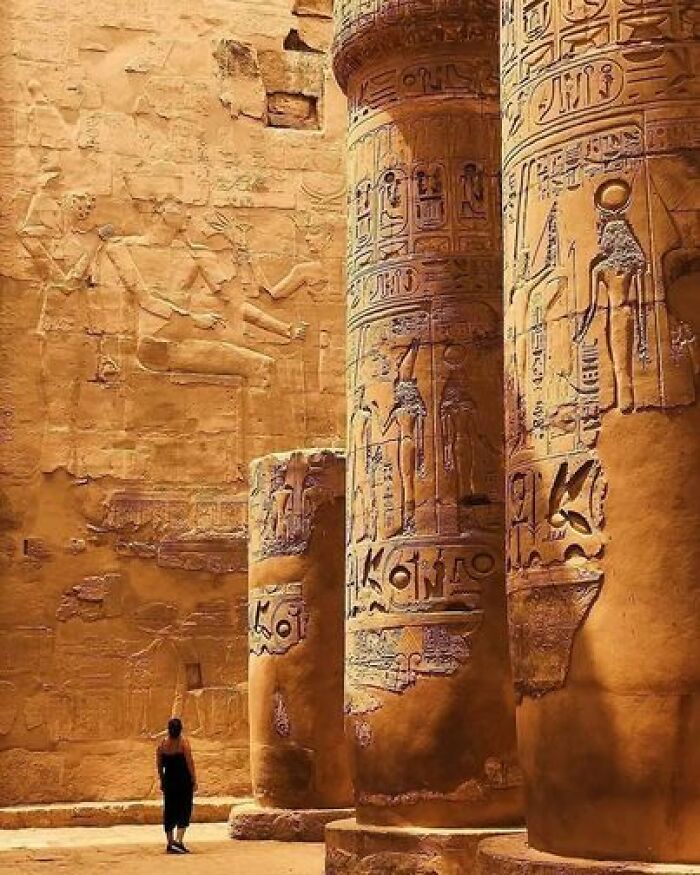The subject of history is a bottomless pit of interesting facts. The deeper you delve into it, the more information there seems to be waiting to be unveiled, which is part of what makes it fascinating. And with seemingly no end in sight, browsing history-related facts can be even more enthralling.
If you ever find yourself spellbound by events of the past or historical sites, we have quite a treat for you today. Below you will find a list of history-related posts, as shared by the ‘Ancient Explorers’ Facebook page, covering everything from ancient buildings to feats of engineering, mosaics, and much more. Wait no longer, scroll down to browse it, and familiarize yourself with some more interesting information from the seemingly inexhaustible world of history.
Below you will also find thoughts shared by associate professor of history at Southern Utah University, Dave Lunt, who was kind enough to answer a few of Bored Panda’s questions.
This post may include affiliate links.
In The Mid-9th Century, Norse Settlers Established Their Presence In The Faroe Islands, Although Some Evidence Hints At Earlier Settlement. Among The Island's Notable Features Is Sørvágsvatn, One Of Its Largest Lakes, Which Astonishingly Rests Approximately 130 Feet (40 Meters) Above Sea Level, Offering A Breathtaking Sight
It sounds like this was really common. Those sick puppies!
The Erechtheion, An Ancient Greek Temple, Was Built On The Acropolis Of Athens During The Golden Age Of The City, Between 421 And 406 Bce. Its Primary Purpose Was To Serve As A Sanctuary For The Ancient Wooden Cult Statue Of Athena, While Also Serving As A Grand Tribute To The Greatness Of Athens During Its Peak Of Power And Influence. Despite Enduring A Tumultuous History Of Misuse And Neglect, The Erechtheion Has Persisted As A Prominent And Remarkable Structure From Antiquity. Its Elevated Location Above The City, Coupled With The Striking Porch Featuring Six Caryatids, Contributes To Its Enduring Distinction And Allure
“I often hear something along the lines of needing to learn history so that we don’t repeat it, but I don’t really like that saying,” Dave Lunt told Bored Panda when discussing the importance of familiarizing yourself with history. “There are things in history that I think would be really cool to repeat (more lessons from Socrates, please!), and—of course—more seriously, people aren’t robots, societies aren’t machines; history can’t repeat, since circumstances are always changing.
“An ancient Greek philosopher named Heraclitus said that nobody can step into the same river twice, since the waters are always changing. Aristotle criticized history because it related what was ‘true’ just one time, while poetry was able to convey universal and unchanging ‘truth’.”
Amidst The Ongoing Debates, We're Curious To Hear Your Thoughts On This Matter
Incredible discovery: Egyptians and Maya had eyesight and were able to look up!
Visualize This Singular Stone Amidst A Staggering Assemblage Of Over 2.3 Million Stones Meticulously Cut, Painstakingly Transported, And Masterfully Positioned To Construct The Awe-Inspiring Great Pyramid Over Three Millennia Ago
So why should we learn history, you might wonder? Well, Prof. Lunt suggested there are a lot of reasons, expanding on a few: “One reason is that it makes us empathetic. To learn what other people have done, suffered, enjoyed, accomplished, experienced helps us to imagine ourselves outside of our own worlds.
“Another reason to study history is that it makes us better citizens (at least, that’s the goal). Learning about a nation’s past helps voting citizens make informed decisions.”
Nestled Within The Ancient Ruins Of Persepolis, Shiraz, Iran, Stands The Iconic Welcoming Gate Of All Nations, Also Recognized As The Gate Of Xerxes. This Architectural Marvel Serves As A Vivid Connection To The Past And The Grandeur Of Persian History. The Roots Of Persepolis Trace Back To The Visionary Efforts Of Darius The Great, A Notable Figure Reigning From 522 To 486 Bc. After Successfully Reinstating 23 States Across The Middle East, Darius Undertook The Ambitious Task Of Erecting Persepolis. This City, A Testament To His Leadership And The Resilience Of The Empire, Would Eventually Become A Beacon Of Cultural Exchange And Diplomacy. Xerxes, The Son Of Darius, Further Enriched Persepolis' Splendor By Overseeing Its Completion In 465 Bc. The Welcoming Gate Of All Nations, Aptly Named, Embodies The Essence Of Unity Amidst Diversity. Its Intricate Carvings And Distinctive Symbols Represent The Various Nations Under Persian Influence, Underscoring The Empire's Commitment To Peaceful Coexistence. As We Admire The Gate Of All Nations, We're Transported Back To An Era When Architecture Was A Testament To Diplomacy And The Rich Heritage Of Persia. It Stands Not Only As A Physical Structure But As A Bridge To The Stories Of Those Who Once Passed Through Its Gates, A Tribute To The Vision Of Leaders Who Shaped History
The Persian Qanat, Also Known As Qanats, Represent An Astonishing Feat Of Engineering That Dates Back 3,000 Years. These Remarkable Systems Are Found In Desert Regions Of Iran And Continue To Be Utilized Today. Originating During The Iron Age, The Process Of Constructing Qanats Involved Skilled Surveyors Identifying Elevated Water Sources, Often Located At The Head Of Former River Valleys Or Even Within Cave Lakes. Subsequently, They Meticulously Carved Lengthy, Sloping Tunnels From These Water Sources To The Areas Where Water Was Needed. The Visible Openings Seen Above Ground Are Carefully Crafted Air Shafts, Designed To Release Dust And Provide Much-Needed Oxygen For The Workers Who Tirelessly Dug The Qanats By Hand, Sometimes Spanning Distances Of Up To Forty Miles. Eventually, These Tunnels Emerge At Ground Level, Transforming Into Captivating Oases. The Construction Of Qanats Demanded Painstaking Effort, Requiring Immense Precision. The Slope Of The Tunnels Had To Be Precisely Calculated To Allow Water To Flow Freely Without Stagnation. If The Slope Was Too Steep, The Force Of The Water Could Accelerate Erosion And Cause Tunnel Collapse. Even After Completion, Qanats Necessitate Annual Maintenance. However, The Irrigation Tunnels Played A Crucial Role In Enabling Agriculture To Thrive In The Arid Desert Regions. This Innovative Technology Gradually Spread Through Trade Along The Silk Road And The Expansion Of Muslim Conquests. As A Result, Qanats Can Be Found As Far Away As Morocco And Spain. The Persian Qanats Are A Testament To The Ingenuity And Enduring Legacy Of Ancient Engineering, Creating Fertile Landscapes In Inhospitable Terrains And Providing A Valuable Water Supply That Has Sustained Communities For Centuries
“Finally (for me), history is really, really interesting,” the historian shared. “People are complicated; they don’t always make rational decisions. Crazy things happen. Luck, circumstance, and decisions change all of the time. Drama is drama, and human drama is very, very compelling.
“On the one hand, I sense a great continuity with people who came before us. People really do have some things in common over time and distance. On the other hand, the people of the past are so very different from the people of today that ‘understanding’ them completely is really out of the question,” Lunt expanded.
The Mysterious Walls Of Sacsayhuaman Among Them, The Most Intriguing Are The Three Zig-Zag Walls That Serve As Protective Fortifications For The Ancient Citadel. These Walls Were Constructed Using Stones That Appear To Be Impossible To Move Without The Aid Of Heavy Machinery. To Put It Into Perspective, The Weight Of Certain Rocks Surpasses A Hundred Tons, While A Medium-Sized Car Weighs Less Than Two Tons. Moreover, It Is Worth Noting That The Tallest Rock Stands At An Impressive Height Of 9 Meters. Beyond Their Sheer Weight, These Rocks In Sacsayhuaman Are Fitted Together With A Precision That Surpasses The Capabilities Of Hand Tools Known To Us Today. When The Spanish Colonizers Arrived In The Area, They Dismantled Numerous Inca And Killike Structures To Repurpose The Materials For Their Own Buildings. However, When Confronted With The Walls Of Sacsayhuaman, They Were Unable To Move The Colossal Rocks. Consequently, The Spanish Attributed The Construction Of These Walls To Supernatural Forces, Owing To Their Immense Size. Is It Conceivable That The Ancient Civilizations Residing In Sacsayhuaman Possessed Knowledge And Techniques That Elude Our Current Understanding? At Present, We Cannot Definitively Answer This Question. What We Do Know Is That These Walls Have Withstood The Test Of Time, Remaining Resilient Against Natural Disasters And All Attempts At Demolition Up To The Present Day
The Shell Grotto Is An Ornate Subterranean Passageway Shell Grotto In Margate, Kent, England. Almost All The Surface Area Of The Walls And Roof Is Covered In Mosaics Created Entirely Of Seashells, Totalling About 2,000 Square Feet Of Mosaic, Or 4.6 Million Shells
Weird. When I did the extensive research of reading the wikipedia page I discovered the grotto was "discovered" by an excavation done by adults and then immediately became a privately owned tourist site.
The Xico Volcanic Crater, Also Referred To As Cerro De Xico Or The "Hill Of Xico," Boasts A One-Kilometer-Wide Expanse That Offers A Unique Sanctuary Of Fertile Soil And Naturally Shielded Farmland Amidst The Continuous Expansion Of Mexico City. Centuries Ago, This Area, Including The Xico Crater And Its Surroundings, Was Submerged Beneath The Waters Of Lake Chalco. However, During The 16th Or 17th Century, The Lake Underwent Drainage Efforts To Create Agricultural And Developmental Opportunities For The Region. Today, The Xico Volcanic Crater Stands As A Testament To The Transformative Nature Of Human Ingenuity And Serves As A Haven Of Productivity And Natural Beauty Amid The Urban Landscape
I can't even read this. I can only think about how unnatural it is to type every word in a sentence with a capital letter.
The expert suggested that social media accounts, such as ‘Ancient Explorers’, can come in handy not only for the users but for researchers in the future as well. “I believe that [social media] is an important way that people communicate today; so, it’s going to be an important source for future historians when they try to make sense of the 21st-century world,” he told Bored Panda.
“Also, I think that there’s ‘something for everyone’ in the history buffet, and if social media can pique and stoke people’s curiosity and interests, then that’s great news,” the expert added, noting that there are different kinds of ‘history’ out there, such as social, economic, political, and gender, to name a few.
“Of course, social media can amplify inaccurate facts and events, or questionable interpretations of them. This is another good reason for people to practice historical thinking—so that they can assess their sources and critically evaluate the information before deciding which interpretation(s) they find most compelling.”
How Was It Possible To Construct Such A Marvel Without Knowledge Of Geometry, Mathematics, Physics, Engineering, And Other Sciences? Yet, Our Ancestors Had Access To All Of These And More. The Chand Baori, A Hidden Treasure Of Bharat, Was Constructed Over 1000 Years Ago In The Abhaneri Village Of Rajasthan, India. This Extraordinary Well Is An Architectural Wonder, With A Depth Of 64 Feet, 13 Floors, And 3,500 Narrow Steps Arranged In Impeccable Symmetry. It Is One Of The World's Largest And Most Stunning Stepwells, Showcasing The Remarkable Abilities Of Our Ancestors
In Ancient Times, The Civilization Of Egypt Faced A Series Of Unexplained Assaults By A Formidable Fleet Of Imposing Warships. These Enigmatic Aggressors Emerged Unexpectedly Around 1250 Bce And Persistently Launched Attacks Until Their Eventual Defeat At The Hands Of Ramesses III. Intriguingly, No Historical Accounts Or Evidence Of Their Existence Can Be Found Beyond 1178 Bce, Leaving Scholars To Engage In Ongoing Debates And Formulate Various Theories Regarding Their Origins, Destination, And Identity. Due To The Lack Of Concrete Information, They Have Come To Be Known Simply As The Sea Peoples. The Mystery Surrounding The Sea Peoples Continues To Captivate The Imagination Of Researchers And Historians, As They Endeavor To Unravel The Secrets Of This Ancient Maritime Threat
Ely Cathedral In Ely, England, Boasts An Awe-Inspiring Masterpiece Of Craftsmanship And Artistic Brilliance In Its Soaring Ceiling. 🏰🌟 The Cathedral's Roof Is Adorned With Intricate Medieval Woodwork, Featuring Exquisitely Carved Beams And Vaulted Ceilings That Create A Mesmerizing Visual Spectacle. As You Step Inside, Your Eyes Are Immediately Drawn Upward, Captivated By The Grandeur And Beauty Of This Architectural Wonder. The Intricate Detailing And Skilled Artistry Showcased In The Ceiling Transport You Back In Time, Evoking A Sense Of Wonder And Reverence For The Craftsmanship Of The Past. Ely Cathedral Stands As A Testament To The Ingenuity And Dedication Of Those Who Built It, Leaving Visitors In Awe Of Its Timeless Magnificence
The Aqueduct At Machu Picchu, Dating Back To 1200 Bc, Stands As One Of The Remarkable Examples Of Functional Ancient Hydraulic Systems In The Americas, With Three Such Structures That Continue To Operate To This Day
Then And Now: The Temple Of Abu Simbel, Egypt. During His Reign, Ramesses II Initiated An Expansive Construction Campaign Across Egypt And Its Controlled Territory Of Nubia. Nubia Held Significant Importance For The Egyptians Due To Its Abundant Gold Reserves And Valuable Trade Commodities. Consequently, Ramesses II Erected Numerous Magnificent Temples In Nubia, Aiming To Showcase Egypt's Power And Influence While Also Influencing The Nubian People To Adopt An Egyptian Way Of Life. Among These Notable Temples Are The Rock-Cut Structures Situated Near The Modern Village Of Abu Simbel, Located At The Second Nile Cataract, Marking The Boundary Between Lower Nubia And Upper Nubia. Two Remarkable Temples Were Built—the Great Temple, Devoted To Ramesses II Himself, And The Small Temple, Dedicated To His Esteemed Chief Wife, Queen Nefertari
In The Southern Province Of Adana's Yumurtalık District In Modern-Day Turkey, An Extraordinary Mosaic Has Been Discovered. This Mosaic Showcases An Eros Figure, A Character From Greek Mythology, Depicted As Fishing While Riding A Horse. Interestingly, This Particular Portrayal Of Eros Is Unique, As It Combines The Features Of Both A Fish And A Horse, Making It Reminiscent Of The Mythical Creature Known As Hippocampus In Greek Mythology. As A Result, It Is Believed That This Mosaic Is The Only One Of Its Kind In The Entire World, Adding To Its Significance And Fascination For Archaeologists And Enthusiasts Alike
Tijuca Peak, Also Known As Pico Da Tijuca, Is A Majestic Mountain Located Within The City Of Rio De Janeiro, Brazil. It Stands As The Most Prominent Peak In The Urban Area Of Rio De Janeiro City, Offering Breathtaking Views Of The Surrounding Landscape. This Awe-Inspiring Mountain Is An Integral Part Of The Tijuca National Park, A Protected Area Spanning An Impressive 3,958.41 Hectares (9,781.4 Acres) And Designated As Such In 1961 To Preserve Its Natural Beauty And Ecological Significance. To Ascend To The Summit Of Pico Da Tijuca, There Are Well-Constructed Stairs Carefully Cut Into The Rock. These Stairs Serve As A Means For Both Locals And Visitors To Experience The Thrill Of Conquering The Peak And Revel In The Panoramic Vistas It Offers. The Hike Up The Mountain Not Only Rewards Adventurers With Stunning Scenery But Also Allows Them To Immerse Themselves In The Lush Tropical Forest Of The Tijuca National Park, Which Boasts A Rich Diversity Of Flora And Fauna. Tijuca Peak Holds A Special Place In The Hearts Of Rio De Janeiro's Residents And Attracts Tourists From Around The World Who Seek Both Outdoor Adventure And A Deep Connection With Nature. The Presence Of This Magnificent Mountain Within The City's Urban Landscape Highlights The Unique Juxtaposition Of Natural Wonders And Modern Urban Life That Rio De Janeiro Offers. As A Cherished Part Of The Tijuca National Park, Pico Da Tijuca Continues To Be A Symbol Of Environmental Conservation And An Inviting Destination For All Those Who Wish To Explore The Beauty Of This Dynamic Brazilian Metropolis
The Oldest Bridges On Earth Today
Greek here!Its actually the oldest bridge in Europe,to be fair.We have it here,dont know where exactly.
The Enigmatic "Gate Of The Gods" At Aramu Muru! 🚪✨ Nestled Near Lake Titicaca In Peru, This Abandoned Stone Carving Has Captivated The Imagination Of Explorers Since Its Discovery In The Early 1990s. Believed To Be An Unfinished Project By The Ancient Incans, Aramu Muru Boasts A Massive Flat Stone Measuring Approximately 23 Feet (7.0 Meters) Square. Its Most Intriguing Feature Is A T-Shaped Niche, Standing Tall At 6 Feet And 6 Inches (198 Cm), Meticulously Carved Into The Stone. Today, Aramu Muru Has Become A Magnet For Paranormal Enthusiasts And Curious Travelers Embarking On A Mystical Pilgrimage. According To Local Legend, An Incan Priest Once Possessed A Golden Disk, Which He Placed Within A Small Depression On The "Door" (Referring To The Niche Carved Into The Rock). Astoundingly, This Act Allegedly Triggered The Opening Of The Door, With The Golden Disk Mysteriously Descending From The Heavens Above
The Monster’s Fin, Lake Baikal In Russia Located In The Frigid And Remote Southern Region Of Russia's Siberia Lies A Lake Unlike Any Other On Earth - Lake Baikal. Nestled Within The Rugged Siberian Wilderness, It Is Renowned For Being The Deepest And Most Ancient Lake On The Planet, Often Referred To As "The Pearl Of Russia" For Its Stunning Beauty. However, Lake Baikal Is Not Only Remarkable For Its Deep Water, But Also For Its Deep Mysteries, As It Has Been The Center Of A Wide Variety Of Weird Happenings And High Strangeness. As A Rift Lake Formed Within A Deep Rift Created By Tectonic Movement Along Fault Lines, Lake Baikal Is Situated In The Russian Region Of Siberia, Between The Irkutsk Oblast To The Northwest And The Buryat Republic To The Southeast. With A Depth Of 5,387 Feet (1,642 Meters) And A Surface Area Of 12,248 Square Miles (31,722 Square Kilometers), It Is Not Only The Deepest Lake In The World, But Also The Seventh Largest By Surface Area. It Is Estimated To Hold About 20% Of The World's Unfrozen Fresh Water, Owing To Its Enormous Size And Depth. At Approximately 25 Million Years Old, It Is Also Believed To Be The Oldest Existing Lake In The World. The Lake's Crystal-Clear Water And Exceptional Biodiversity Make It A Unique Place. It Is Home To Various Species Found Nowhere Else On Earth, Earning It The Nickname "The Galapagos Of Russia." This Rich Ecology And Biodiversity Were Recognized When It Was Designated A Unesco World Heritage Site In 1996
Found online: Perhaps the most circulated story of strange, underwater extraterrestrials is an encounter from 1982. According to Vladimir Azhazha, a former officer in the Soviet Navy, declassified documents from the end of the Cold War state that in 1982 seven military officers were training underwater in Lake Baikal. As they were training, the officers saw strangely shaped vehicles traveling much faster than anything the Soviet Navy had available. As the officers continued diving, at a depth of 150 feet they encountered a group of humanoid entities. While non-human, the entities were described as wearing silver suits with helmets yet not any familiar kind of diving equipment. The officers then attempted to capture these strange entities, which resulted in three of the officers being brutally killed while the four survivors were heavily injured.
Nestled In The Heart Of Arizona, This Mesmerizing Park Is A True Testament To The Wonders Of Nature. Here, You'll Encounter A Mesmerizing Landscape Adorned With Magnificent Petrified Wood That Has Stood The Test Of Time. 🌲🌄 On December 8, 1906, Petrified Forest National Monument Was Established By Theodore Roosevelt. Later, On December 9, 1962, It Was Elevated To The Status Of A National Park. This Remarkable Park Is Home To A Diverse Array Of Plant And Animal Species, Creating A Thriving Ecosystem Within Its Boundaries. Within The Park's Vast Expanse, You'll Encounter An Impressive Variety Of Wildlife. From Majestic Elk And Mule Deer To Swift Pronghorn And Elusive Bobcats, The Park Teems With Life. Coyotes, Kitfoxes, Badgers, Prairie Dogs, Porcupines, And A Multitude Of Rodents Make Their Homes Here. Look Up, And You Might Spot A Raven, Golden Eagle, Or Red-Tailed Hawk Soaring Through The Skies. Keep An Eye Out For Burrowing Owls, Horned Larks, Scaled Quails, And An Array Of Enchanting Songbirds. The Park Is Also A Haven For Hummingbirds, Roadrunners, And Collared Lizards. Snake Enthusiasts May Come Across The Bullsnake, Short-Horned Lizard, Hopi Rattlesnake, Side-Splotch Lizard, Whiptail Lizard, Kingsnake, And More. The Park's Diverse Habitat Also Supports A Range Of Amphibians, Insects, And Arachnids, Including The Spadefoot Toad, Tiger Salamander, Tarantula, Scorpion, Butterflies, Moths, Solitary Bees, Tarantula Hawks, Carpenter Ants, And Triops. In Addition To Its Rich Biodiversity, Petrified Forest National Park Holds A Significant Place In Human History. Spanning Over 13,000 Years, The Park Is A Treasure Trove Of Archaeological And Historic Sites, With Over 800 Identified To Date. These Sites Offer A Glimpse Into The Past, Providing Insights Into The Cultures And Lives Of The People Who Once Inhabited The Area
Colosseum's Basement, 📍 Rome, Italy 🇮🇹 The Colosseum, An Emblem Of Rome's Grandeur And Historical Significance, Stands As A Testament To The Architectural Prowess And Cultural Richness Of Ancient Rome. While Millions Of Tourists Have Marveled At Its Towering Structure And Relived The Past Glory Of Gladiator Battles And Grand Spectacles Within Its Walls, There Lies An Enigmatic World Beneath The Surface – The Colosseum's Basement. A Hidden Labyrinth Of History, Intrigue, And Engineering Marvels Awaits Those Who Dare To Venture Below
While the architecture is quite intriguing, the reason behind the Colosseum's use was utterly barbaric.
Despite Their Extensive Raids And Pillaging Across Europe, The Vikings Encountered Difficulties In Subduing A Group Of People They Referred To As The "Wretched People" Or Skraelings In North America. In An Intriguing Discovery, Archaeologists Unearthed Native American Arrowheads Buried Alongside The Remains Of Norse Individuals In A Viking Settlement In Newfoundland, Canada. This Finding Has LED To The Theory That The Native American Population Successfully Repelled The Viking Invaders, Forcing Them To Abandon Their Endeavors In North America, Never To Return
Wikipedia: "The term "skraeling" was a derogatory term that the Vikings used to refer to the native people of North America and Greenland. It likely derived from Old Norse meaning "dried skin" which was a reference to the animal skins that native peoples wore."
An Awe-Inspiring Image Capturing The Majestic Giza Pyramids!
More like a sad image showing how they have to live so close to ancient structure
One Of The Moai Statues On Easter Island Remains In A State Of Partial Carving, Having Never Been Raised Into An Upright Position. Had This Statue Been Completed And Erected, Its Towering Height Would Have Reached 21 Meters, Surpassing The Weight Of Two Boeing 737 Aircraft Combined
Ah, the international system of Boeing aircraft weight measurement again.
Behold The Gentle Giants Of The Past! Ground Sloths, A Diverse Group Of Mammals, Roamed The Americas For Countless Millennia. Stretching Their Range From Alaska To Argentina, These Magnificent Creatures Left An Indelible Mark On The Landscape. However, The Story Took A Somber Turn As The March Of Time Unfolded. By Around 10,000 Years Ago, A Combination Of Climate Change And Human Hunting Exacted A Heavy Toll, Leading To The Extinction Of All Mainland Species Of Ground Sloth. Their Disappearance Marked The End Of An Era And Left A Void In The Natural World They Once Called Home
The Enigma Of Ancient Metal Clamps Found On Megaliths, Temples, And Other Prehistoric Monuments Across The World Remains One Of The Greatest Unsolved Mysteries Of All Time. What Purpose Did These Small Metal Clamps Serve In Holding Together Large Stone Blocks? How Did This Technology Spread To Distant Locations Such As Ancient Egypt, Pre-Columbian Peru, And Cambodia Thousands Of Years Ago? These Countries Are Separated By Vast Distances, So Who Imparted This Knowledge To Our Ancestors? The Use Of Metal Clamps In T-Grooves Has Been Discovered In Various Sites Including Tiahuanaco, Ollantaytambo, Koricancha, And Yuroc Rumi In Vilcabamba. Clamps Were Also Employed In The Construction Of The Parthenon, Buildings In Mesopotamia, Egypt, And Cambodia. Some Researchers Suggest That The Clamps Were Used For Ceremonial Purposes, While Others Propose That They Were Utilized To Hold The Stone Blocks Together As They Hardened Into Place. Imprints Found On These Metal Clamps Reveal That They Were Designed To Join Colossal Blocks Of Stone That Would Be Impossible For Modern Machinery To Lift. Unfortunately, Only A Few Of These Clamps Have Survived, As Many Were Removed By The Spanish Who Believed They Were Made Of Gold. Some Of These Clamps May Have Been Adorned With Silver And Gold, As Historical Records Document That Invading Armies Sought To Dismantle These Structures Solely To Obtain The Valuable Clamps
Situated On The Eastern Bank Of The Nile River In Luxor, The Karnak Temple Stands As An Ancient Egyptian Temple Complex. Its Construction Spanned Over 2,000 Years, Commencing From The Middle Kingdom And Persisting Until The Ptolemaic Period. Renowned For Its Grandeur, It Ranks Among The World's Largest And Most Impressive Temple Complexes. Encompassing Approximately 200 Acres, The Temple Complex Comprises Numerous Temples, Halls, And Courtyards. Notably, It Boasts The Great Hypostyle Hall, A Colossal Chamber Supported By 134 Immense Columns, Each Towering Over 70 Feet In Height
Ratneshwar Mahadev Mandir, Located In The Sacred City Of Varanasi, Uttar Pradesh, India, Is Renowned As One Of The Most Frequently Photographed Temples. Although The Temple Appears To Be Well-Maintained, It Notably Exhibits A Significant Inclination Towards Its Rear Side. Furthermore, The Sanctum Sanctorum (Garbhagriha) Of The Temple Remains Submerged In Water For A Substantial Portion Of The Year, Except For A Brief Period During The Summer Months. This Unique Characteristic Adds To The Temple's Allure And Intrigue, Captivating The Attention Of Visitors And Photographers Who Are Drawn To Witness Its Distinct Architectural Feature And Observe The Dynamic Relationship Between The Temple And Its Watery Surroundings
Note: this post originally had 80 images. It’s been shortened to the top 30 images based on user votes.
A really interesting thread, but slightly ruined by the authors insistence of using capital letters on every word. It's just distracting.
I can't make it through any of the text. It hurts my brain!
Load More Replies...A really interesting thread, but slightly ruined by the authors insistence of using capital letters on every word. It's just distracting.
I can't make it through any of the text. It hurts my brain!
Load More Replies...